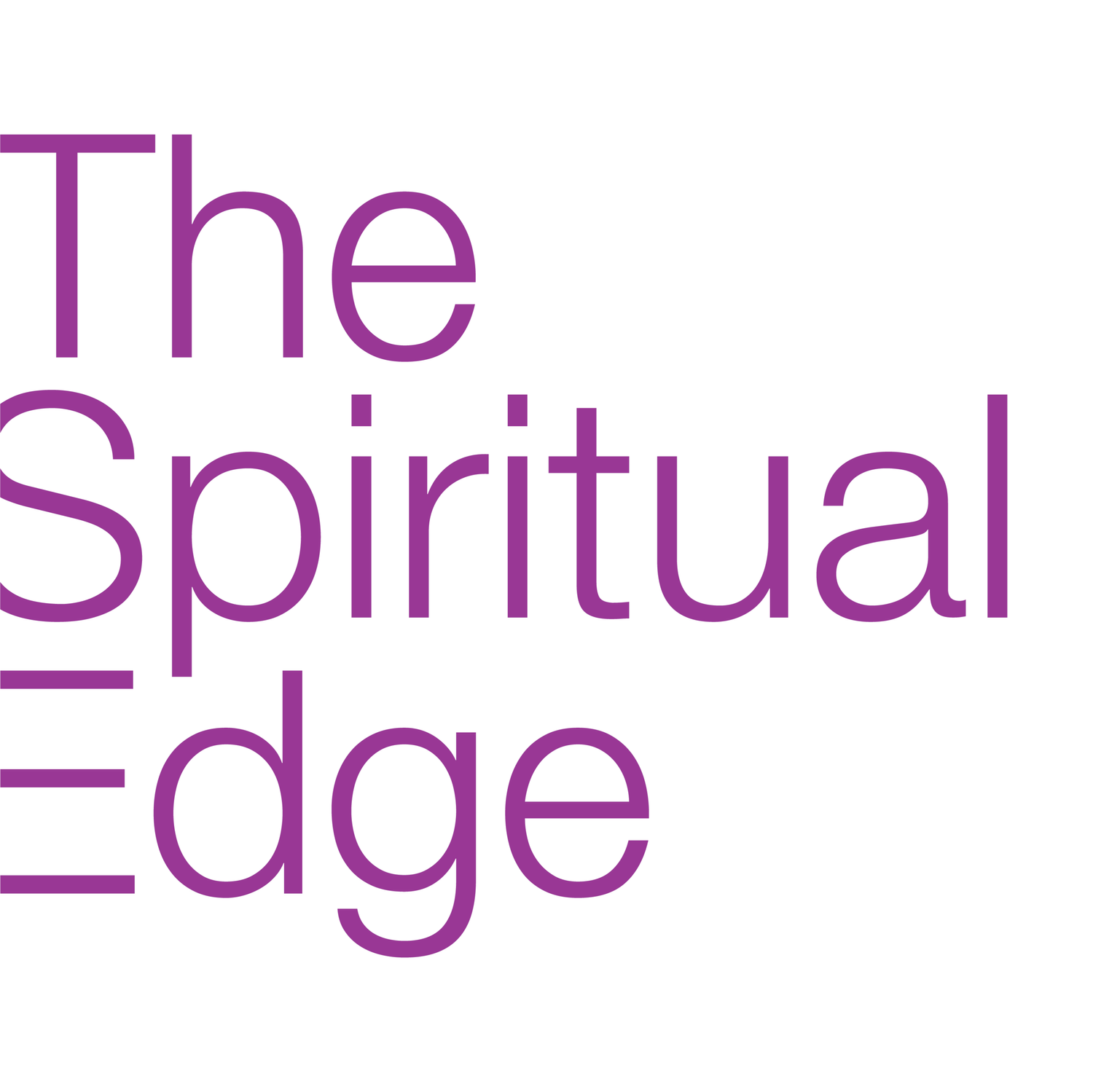A spiritual haven for African refugees in Kansas City
How an African diaspora congregation grew out of a largely white Methodist church.
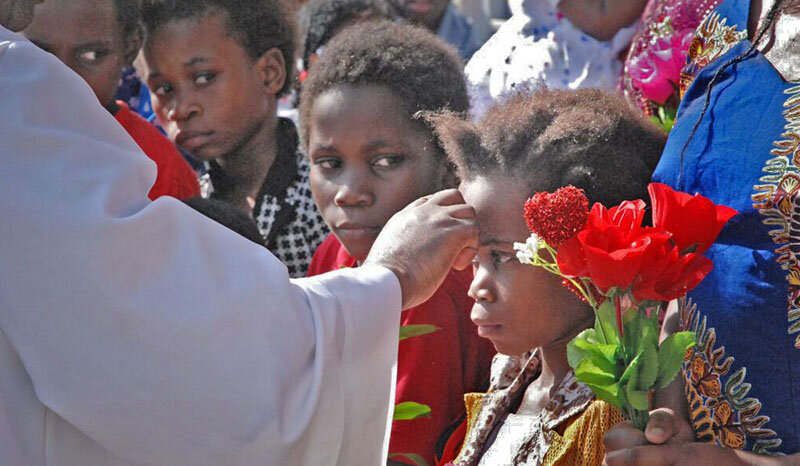
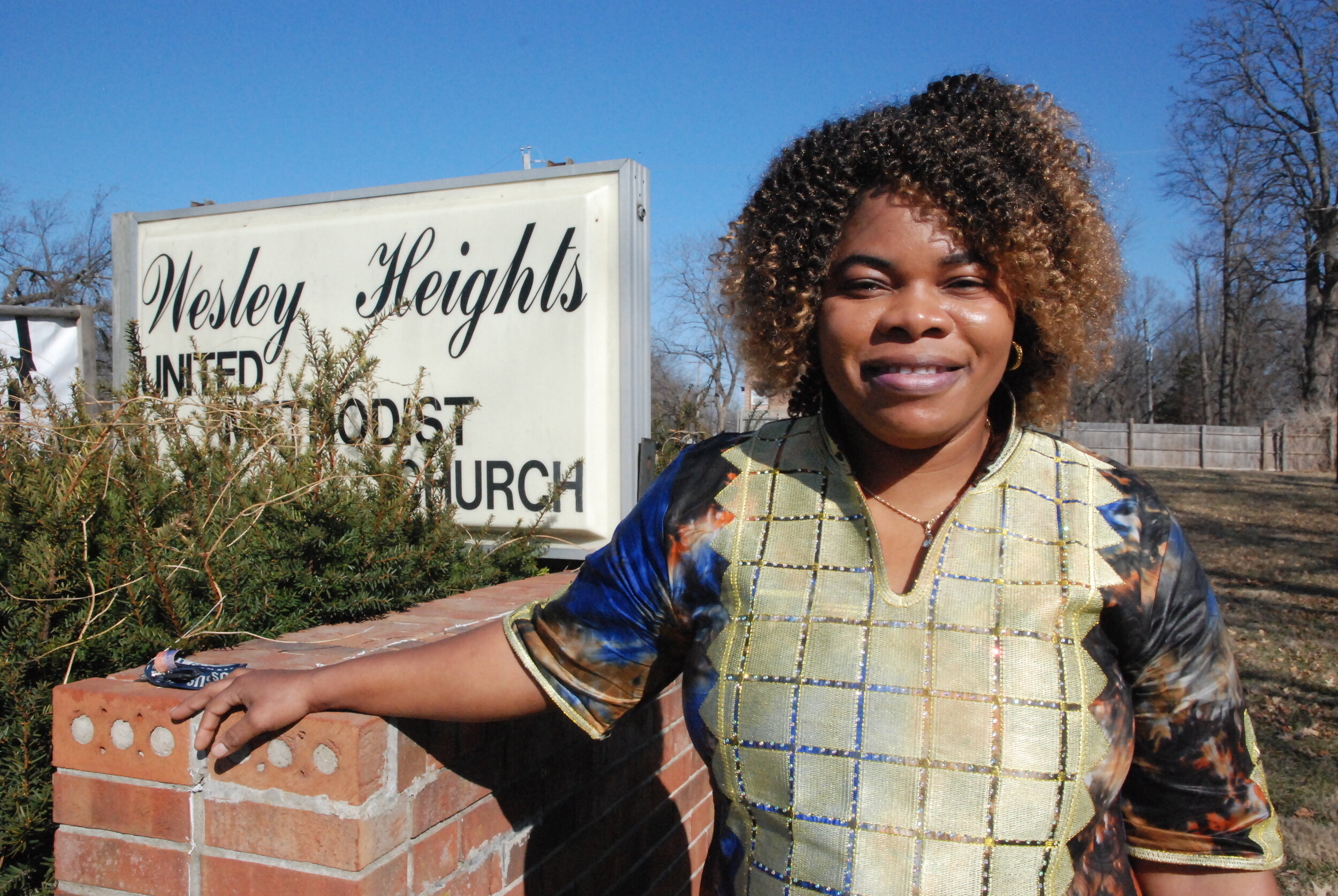
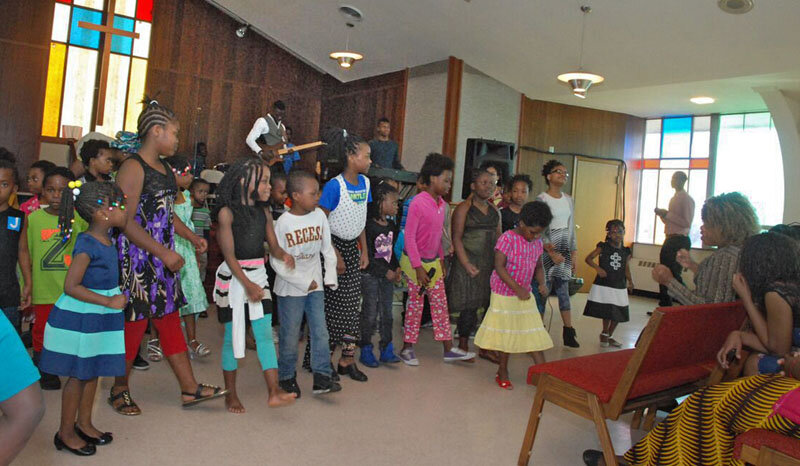
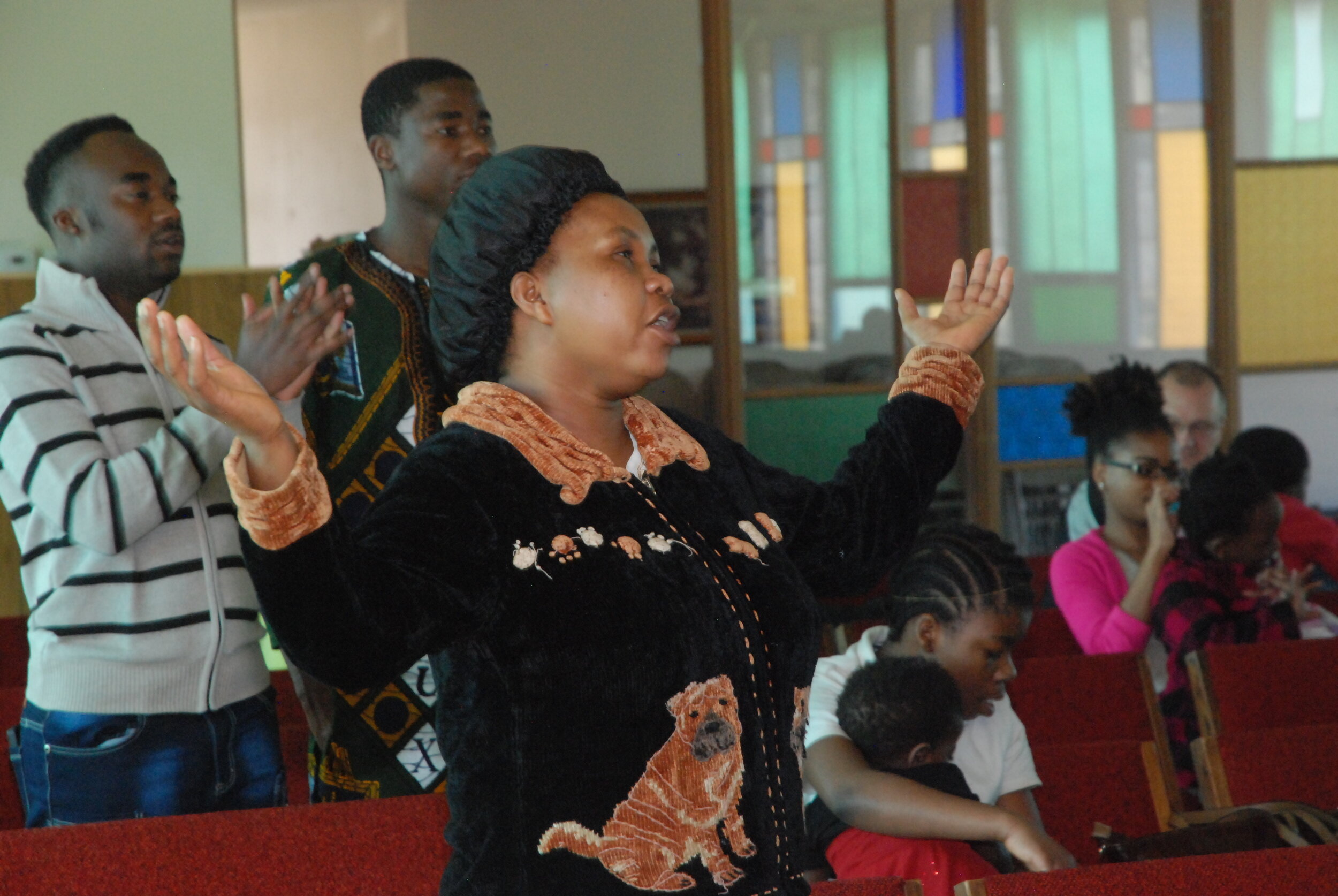
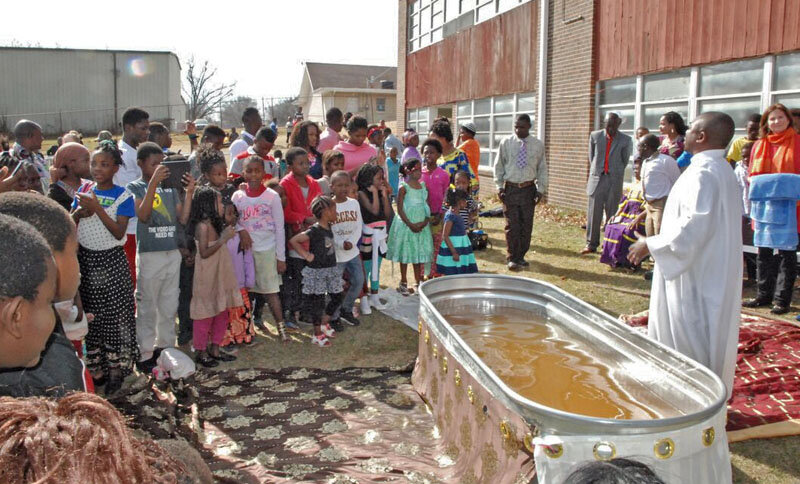
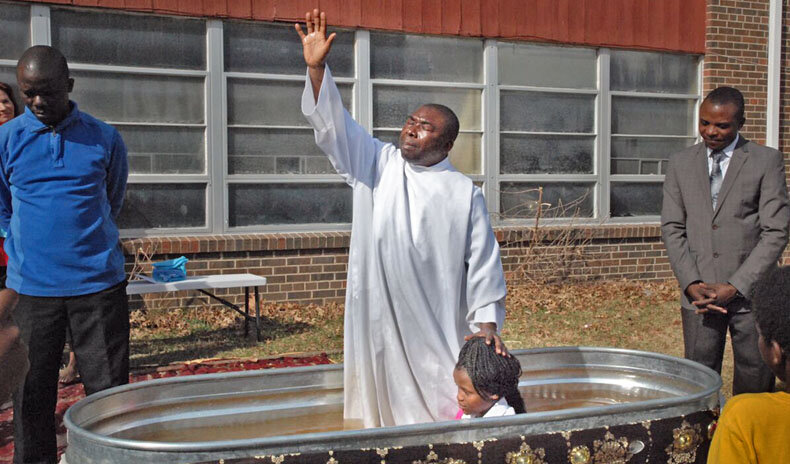
By Steve Mencher
APRIL 11, 2017—Mid-February in Kansas City is usually a time for sweaters and scraping ice off your windshield. Not really when you’d expect to be firing up an air pump to inflate a kiddie pool. But the pool, if it holds air and water, may have a higher calling.
The Kuomba Pamoja church is planning its first-ever baptisms for this Sunday, when temperatures are forecast to reach the 70s. But Pastor Fataki Mutambala is realizing that this shallow plastic pool isn’t going to do the trick.
“Tall person, to be baptized is problem,” he says, after seeing how narrow and shallow the pool is. He’ll need to find another solution, and quick. The baptisms are just a few days away.
Planting the seeds
The Kuomba Pamoja church has come a long way in just a few years. Back in 2013, the seeds of its congregation were planted inside another church, mostly by one woman, Riziki Lubula, and her family.
The woman everyone calls Mama Riziki grew up the daughter of a pastor in the Democratic Republic of Congo — or DRC.
“My father was [a] pastor, was reverend pastor in Methodist Church,” she says. “And when I was growing up — my father was telling me to do ministry, to create the work of God. Everywhere you go, don’t forget God.”
Since the 1990s, wars in the DRC have led to millions of deaths. In the face of this chaos, Mama Riziki fled to neighboring Zambia. Her father wasn’t so lucky. He was killed in his church. But remembering his words, Riziki created a ministry and a choir in the Zambian refugee camp where she lived for more than a dozen years. It felt like honoring a family legacy.
“My brother now is [a] pastor,” Riziki says. ”Another brother is [a] pastor in Congo, and me too. I try to do the work of God.”
Finally in 2013, she and her family were accepted to the United States. Kansas City’s low cost of living, strong economy and comprehensive social services have made it a haven for refugees. As Mama Riziki was settling into her new life there, one of her biggest priorities was finding a place to worship. Fasting and praying on that question, she tagged along with a friend one day to visit Central United Methodist Church.
“I didn’t speak English at that time,” Mama Riziki says. “I only spoke Swahili and a little bit [of] English. And I told them, ‘God knows any language. I have to do the work of God here.’”
Central, as it’s known, is in Brookside, about eight miles from where Mama Riziki was living. It’s a place where crime is low, education and salaries are high, and it’s whiter than the rest of Kansas City.
Despite the seeming cultural mismatch, the connection to her childhood faith made Mama Riziki feel at home. So, soon after her first visit, she proposed starting a congregation and a choir there with fellow refugees like the one she’d built in Zambia.
“They encouraged me, they were happy and they were supporting me, and [I pushed] them every day, and I work hard every day in prayer and fasting to create ministry and open the choir here in Kansas City,” she says.
Before long, a school bus was bringing refugees across town on Sunday mornings. The worshippers from Africa met first by themselves in the basement of the church — singing and praying in Swahili with English translation. Then they came upstairs for the main service, which was mostly in English, with some attempts to mix in Swahili.
Two churches in one
Trevor Dancer started as pastor of Central not long after Mama Riziki’s first visit. He says that some longtime members of the church were initially resistant to change, and uncertain about the role of the new arrivals, including lots of rambunctious kids. But most members responded positively, and Mama Riziki’s vision started to take shape.
“Mama Riziki is this great evangelist, this great inviter of a person, just this warm glowing spirit, so she began to invite everybody she knew, and that snowballed to where this small contingency of refugees worshipping here grew into 150 people,” says Dancer.
As Central’s African contingent grew, church district officials brought in another pastor, Pastor Fataki, to help build the church and lead worship there each weekend. Just as Mama Riziki did, Pastor Fataki sought out recent African refugees — from the DRC and elsewhere — and invited them to worship at Central.
With new families showing up every week, Pastor Dancer began to worry that Central wasn’t serving them. For one thing, his English-language sermons were lost without translation. What’s more, he says, “we were taking 100 to 120 people out of their neighborhood every single weekend, and many of the people were on the bus two hours just to get to church and two hours back.”
At that point, church leaders wrestled with a question: “What would it look like if we were to start — not quite another church, because that’s not there yet, but start a second site in this neighborhood?” Pastor Dancer recalls.
The move across town
“This neighborhood” is Northeast Kansas City, where a lot of Congolese refugees live. It’s less green than Brookside, with more used car lots, fewer places to buy healthy food. There are some abandoned and boarded up properties, but some signs of new construction and renovation as well.
A closed United Methodist church here was repurposed for the new Kuomba Pamoja Church — that’s Swahili for “Worship Together.”
Worship is different now, after the separation from Central. There’s a lot less English, church doesn’t start or end right on time, and people seem freer to let go and feel the holy spirit.
Things in the new church feel just right to Mama Riziki. “We [needed] to worship our god like [we do in] Africa, like we worship in our country, not limited.”
Another lay church leader, Solomon Kasongo, agrees.
“In terms of prayers,” he says, “we pray loudly. We call upon many people to come and pray, the way it is done in many Pentecostal churches in Africa, but also in United Methodist churches in Africa. They call all people to pray. So that’s the mass prayer — everyone praying in his own words. All is for the praise and the glory of God.
Historical perspective
You may have been wondering how Methodism got to Africa. It’s not surprising, given the outlook of the religion’s founder John Wesley. “The world,” he said, “is my parish.”
“There was a lot of emphasis on missions connected with the United Methodist Church,” says Wallace Hartsfield, a Kansas City pastor and professor of Hebrew Bible. “So the United Methodist Church has touched a significant portion of this world.”
Hartsfield says that leaders of United Methodist churches in Africa, whether missionaries or local pastors, were often savvy enough to realize that indigenous African expressions of religion could be blended into their Christian worship.
“If one were to look into African traditional religions, the whole ideal of the drums and the rhythms — polyrhythms that are working together and the people dancing back and forth — it’s almost as if they are no longer in control.”
This also sounds a lot like Pentecostalism — known for its direct address to the Holy Spirit, including speaking in tongues. In the mid-20th Century some leaders of American Main Line Protestant churches, like the United Methodists, began to mix Pentecostal worship into their services. That mixture came to be known as the “charismatic movement.”
“The term charismatic,” Hartsfield explains, “comes from the Greek term charis — which means grace. And literally the Charismatic movement is about being graced by God, graced with ability.”
Hartsfield says Kuomba Pamoja’s tilt toward charismatic worship fits a pattern. He’s seen the story of African diaspora churches play out before and he says that in most cases, a group’s independence will bring strength.
“[For] many of them it was important … to have their own space because they felt they could maintain who they were, while at the same time being Christian. Whereas when they were with predominantly white groups, they felt as if their identity — who they were — was not being affirmed.”
He says you can see this in Kuomba Pamoja’s upcoming baptism, which will look very different from the traditional Methodist sprinkling of holy water from a basin on a stand.
“It doesn’t surprise me that you’d have a Congolese church that would be interested in baptism by immersion because that’s somewhat of a connection with African culture and the real connection with the elements.”
Wading in the water
Sunday morning, Pastor Fataki is up with the sun. A church member has managed to track down a corrugated cattle tank to replace the tiny kiddie pool as the site of the baptism, and Pastor Fataki is worried the fire department, just a few doors down from the church, isn’t going to remember its promise to help fill it. He pays them a visit before 7 a.m. and the tank is ready to go by 7:30.
There’s a final flurry of activity, and suddenly, it’s time for the ceremony. The galvanized eight-foot-long oval has been transformed by four curtains — two white, two brown and gold — into a religious object.
Kisubi Kilozo is one of those lining up. He’s a 25-year-old from the DRC with three kids, one just six months old. He has that perpetually tired look of a parent with a baby.
“The meaning of being baptized is very old,” he says. “But the world is very big and spiritually dangerous. So, I decided to be baptized to separate myself from the things of the world. To leave all that behind and follow Jesus. When I came here, I heard Pastor Fataki preaching and praying.And I was filled with the Holy Spirit. Through Fataki’s message, I was guided to be baptized.”
Kilozo is dunked by Pastor Fataki, then a few more young men, a trio of young women, a handful of kids, all sit down in the tank, one after another, nervous, excited. They give themselves over to the strong hands of Pastor Fataki, who’s dressed in a flowing white robe. He supports them as he dips them back into the cloudy water.
They dry off and change, then line up on a bench holding plastic flowers. The pastor traces a cross on their foreheads with holy oil. And then it’s time to return to the sanctuary for communion, prayer and song.
Taking a giant leap
The church has taken a giant leap today — but its growth is challenged by the new administration in Washington, which seeks to cut refugee resettlements by more than half. That angers lay leader Solomon Kasongo, who hopes to provide solace to more, not fewer fellow refugees.
“Restoring the life of people that had no hope to live any more, but giving back the life — it’s very important,” he says.
“But banning those people, stopping them from coming in the country, is so painful. It’s like [saying], ‘Die there – we don’t care about what’s happening in your life.’”
Kasongo says the church can play a unique role in healing.
“People…have been passing through traumas, traumatized — [suffering] great loss and [things] like that… Butgiving them life back, this is the work of God. Saving someone who is dying and giving them life, is to serve God.”
Of course, the work of God and the work of man don’t always line up neatly. But for Kuomba Pamoja members like Solomon Kasongo, helping fellow refugees find their way in a strange land is beyond just a personal commitment — it’s a religious obligation. And they’re happy to have found a place with others who feel the same.
* * *
Steve Mencher’s reporting on the Kuomba Pamoja community in Kansas City began as a joint effort of PBS affiliate KCPT and the Association of Independents in Radio, part of “Localore:Finding America” in 2015-2016, with lead funding from the Corporation for Public Broadcasting.
The Spiritual Edge is a project if KALW Public Radio. Funding comes from the Templeton Religion Trust.
